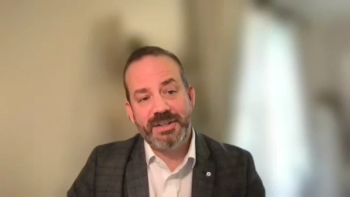
Digital Health Blunders and Wonders: Dark Billing & an Anti-Seizure Implantable
If you have patient engagement anywhere in your strategy, position statement, or marketing material, then you should have an open, honest, patient-friendly and transparent billing system.
Hello! I'm Dr. Nick,
The Blunder
This week's blunder is a lack of transparency and sharing of data for bills and charges that leaves patients totally out of the loop and unable to control their healthcare.
Everyone talks up the idea of patient engagement -- in fact my friend and colleague Leonard Kisch cited this as the blockbuster drug of the century back in 2012, comparing its effectiveness to standard treatments using drugs, suggesting, as he puts it, if the drug reduced the need to go to the hospital by this amount, it would be considered malpractice not to use it.
So what's the status of hospital billing? Well, you're guess is as good as mine. What bill you receive, how it relates to the care you receive, the services actually delivered, will depend on the notoriously wide range of prices, your individual insurance discounts, and any side deals between hospitals, physicians, payers that can include insurance, employers, various benefit managers...
In fact, the recent stories have highlighted this mess with what you might imagine is the perfect person to take on the insurance companies and hospitals: The former president of the Actuarial Society of Greater New York, who's taught Actuarial Science and served as an expert witness for the insurance companies on billing.
But even he was defeated. Horror stories of the unconscious doctor being given life-saving treatment with coverage, but ending up with crippling debt thanks to only a partial coverage of the billed amounts and a practice known as balanced billing that seeks to recover differences in agreed rates between the payer and the biller from the patient.
You know, the patient that is now seen as the key to the future of being engaged - just removing that recurrent cycle of queries by patients already stressed out by ill health, who are faced with a barrage of bills that they didn't expect and certainly don't understand -- money's left on the table by reducing the billing cycle time any-odd days there's a byproduct of happier, healthier patients.
So, if you have patient engagement anywhere in your strategy, position statement, or marketing material, then you should have an open, honest, patient-friendly and transparent billing system.
The Wonder
This week's wonder is a new electronic device implanted into the brain that caught my eye not just because it could stop seizures, but because it was combining several technologies into one system.
We've seen a number of attempts at controlling disease and symptoms with electrical brain implants with varying, oftentimes disappointing results. But this device, developed by the team from University of Cambridge in the Ecole Normale Superieure de Mains, an inserm in France, uses a thin, organic, flexible film that interfaces with human tissue and provides an interface with the brain.
When the signal of a seizure is detected by the organic electrode, it activates an ion pump with an electric field that delivers a native brain chemical, a neurotransmitter in this case - gamma amino buteric acid, or GABA for short. This release was shown to inhibit the seizures induced in mice. The additional benefit is the drug used is quickly metabolized or broken down by the body, thereby limiting the oftentimes frequent side effects associated with any therapies directed at epilepsy.
The amount of drug release is controlled by the strength of the electric field applied, allowing a fine-tuning of the deliver mechanism, dependent on the sensor readings from the electrode.
While this is early work tested in mice, it's exciting for integration of multiple technologies sensing the start of a seizure using an electrical, organic, flexible film, and then drives the local release of a neurotransmitter to stop the debilitating characteristics of spread.
I imagine many more applications along these lines, even expanding on existing technologies like the traditional pacemaker, which senses heart activity and has customized responses depending on the individual rhythm characteristics.
This response is electrical, but in the future, could be a nanodrug or titrated medication responses for other indications or health conditions.
Until next time, I'm Dr. Nick, the Incrementalist. Don't let perfection stand in the way of progress.
Get the best insights in healthcare analytics
Related



































